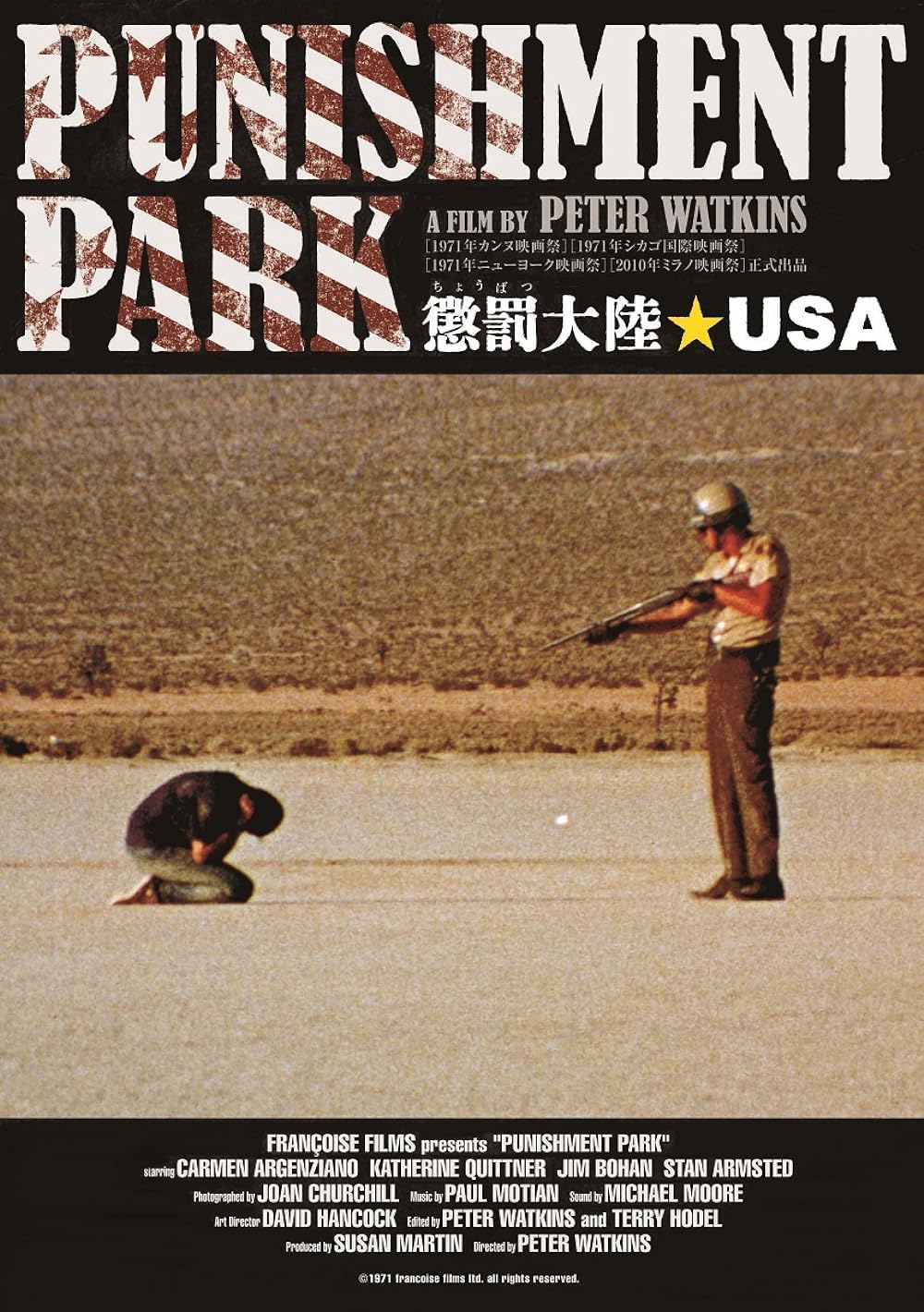Introduction:
“Punishment Park,” a thought-provoking documentary-style drama directed by Peter Watkins, emerged during a turbulent period in American history. Released in 1970, the film engages with the societal tensions and political upheaval of the time, offering a unique perspective on dissent, authority, and justice. This comprehensive review delves into the film’s narrative, cinematography, thematic depth, and the impact it had on both audiences and the broader cultural landscape during its release.
Section 1: The Context of “Punishment Park”
1.1 Historical Background: To fully appreciate the film, it’s essential to understand the historical context in which “Punishment Park” was created. The late 1960s and early 1970s were marked by civil unrest, anti-war protests, and heightened political polarization, all of which influenced the film’s narrative and tone.
1.2 Director Peter Watkins: Explore the unique directorial style of Peter Watkins, known for his unconventional approach to filmmaking. Watkins employs a documentary-style format, blurring the lines between fiction and reality, to immerse the audience in the tense and charged atmosphere of “Punishment Park.”
Section 2: Narrative and Plot
2.1 The Trial and Punishment Concept: “Punishment Park” unfolds as a pseudo-documentary, presenting a dystopian vision where dissenters are given the choice between lengthy prison sentences or navigating a grueling, potentially lethal obstacle course known as Punishment Park. The film follows two parallel narratives: a trial of activists and their experiences in Punishment Park.
2.2 Characters and Perspectives: Watkins weaves together the stories of the characters, both on trial and traversing Punishment Park, providing a multi-dimensional view of the societal conflicts. Through interviews and interactions, the film explores the motivations, fears, and ideologies of both the dissenters and the authority figures, creating a nuanced portrayal of each group.
2.3 The Realism Factor: One of the film’s strengths lies in its documentary-style realism. The use of non-professional actors and improvised dialogue contributes to the authentic feel, blurring the lines between fiction and reality. This approach allows the audience to engage emotionally with the characters and events, heightening the impact of the film’s message.
Section 3: Cinematography and Aesthetic Choices
3.1 Handheld Camera and Cinéma Vérité: “Punishment Park” employs handheld cameras and cinéma vérité techniques, immersing the audience in the immediacy of the events. The documentary-style cinematography adds a sense of urgency and authenticity, amplifying the tension and emotional impact of the narrative.
3.2 Sparse Soundtrack and Natural Sounds: Watkins opts for a sparse soundtrack, relying on natural sounds to enhance the film’s realism. The absence of a traditional score allows ambient sounds, such as footsteps, wind, and distant shouts, to create a haunting backdrop that intensifies the viewer’s connection to the on-screen events.
3.3 Editing and Pacing: The film’s editing and pacing contribute to its powerful impact. The rapid cutting between the trial and Punishment Park sequences builds suspense and emphasizes the urgency of the characters’ situations. The deliberate use of long takes and close-ups intensifies the emotional impact of key moments.
Section 4: Themes and Social Commentary
4.1 Dissent and Repression: At its core, “Punishment Park” explores the complex relationship between dissent and repression. The film raises questions about the limits of free speech, government overreach, and the consequences of dissent in a society facing internal discord and external threats.
4.2 Authority and Control: Watkins critiques the exercise of authority and control by depicting the brutality of Punishment Park as a means of suppressing dissent. The film prompts viewers to question the ethics of using force and fear to maintain order, especially in the face of growing civil unrest.
4.3 Symbolism and Allegory: “Punishment Park” operates on multiple levels of symbolism and allegory. The harsh landscape of Punishment Park itself becomes a symbol of societal punishment and the lengths to which those in power are willing to go to quell opposition. The film invites audiences to interpret its narrative through the lens of broader political and social dynamics.
Section 5: Reception and Impact
5.1 Controversy and Censorship: Upon its release, “Punishment Park” sparked controversy and faced censorship due to its incisive critique of the U.S. government’s response to dissent. Some viewers found the film’s portrayal of authority figures and the treatment of dissenters uncomfortably close to reality, leading to heated debates about its appropriateness.
5.2 Critical Acclaim and Later Recognition: Despite initial challenges, “Punishment Park” has earned critical acclaim over the years for its bold narrative, powerful performances, and daring approach to filmmaking. The film’s impact has endured, with later generations of cinephiles and scholars revisiting it as a time capsule of a tumultuous era.
Conclusion:
In conclusion, “Punishment Park” stands as a cinematic exploration of societal tensions, dissent, and the consequences of unchecked authority. Peter Watkins’ directorial choices, including the documentary-style approach and powerful cinematography, contribute to the film’s lasting impact. As a product of its time, “Punishment Park” continues to resonate, challenging audiences to reflect on the parallels between its dystopian vision and the socio-political realities that persist today. The film remains a testament to the power of cinema to provoke thought, evoke emotion, and spur dialogue on issues that shape the collective conscience of society.
